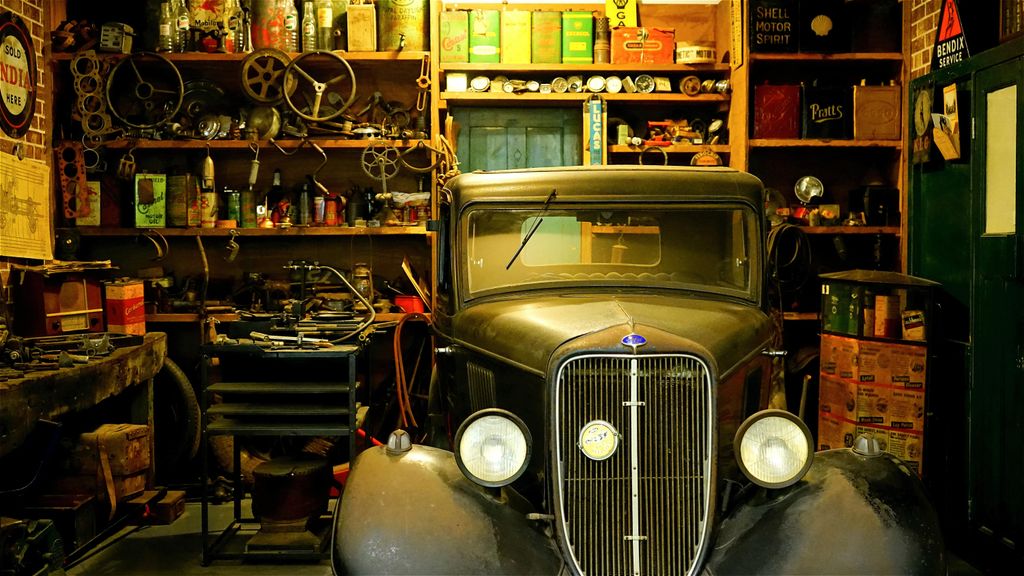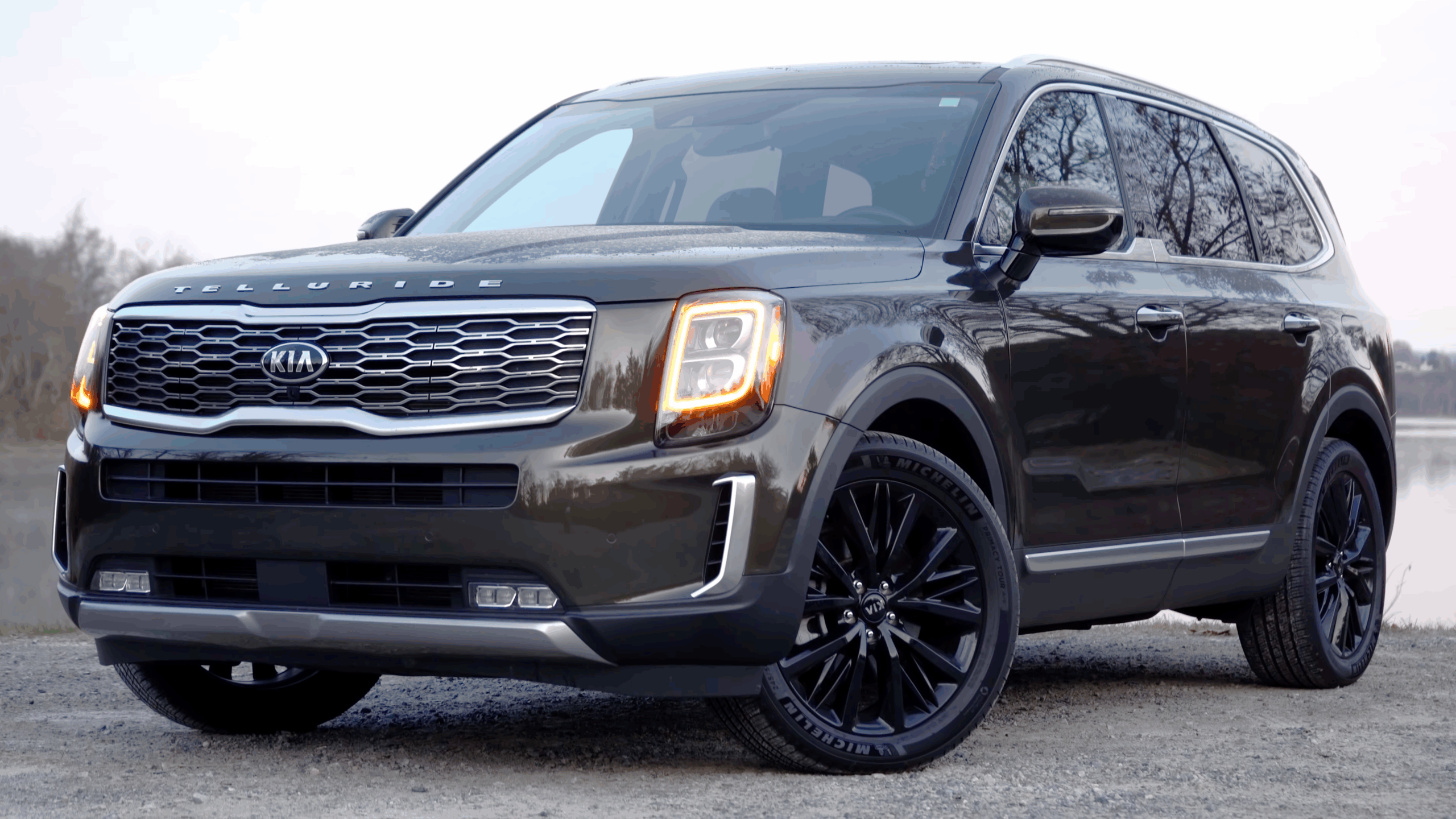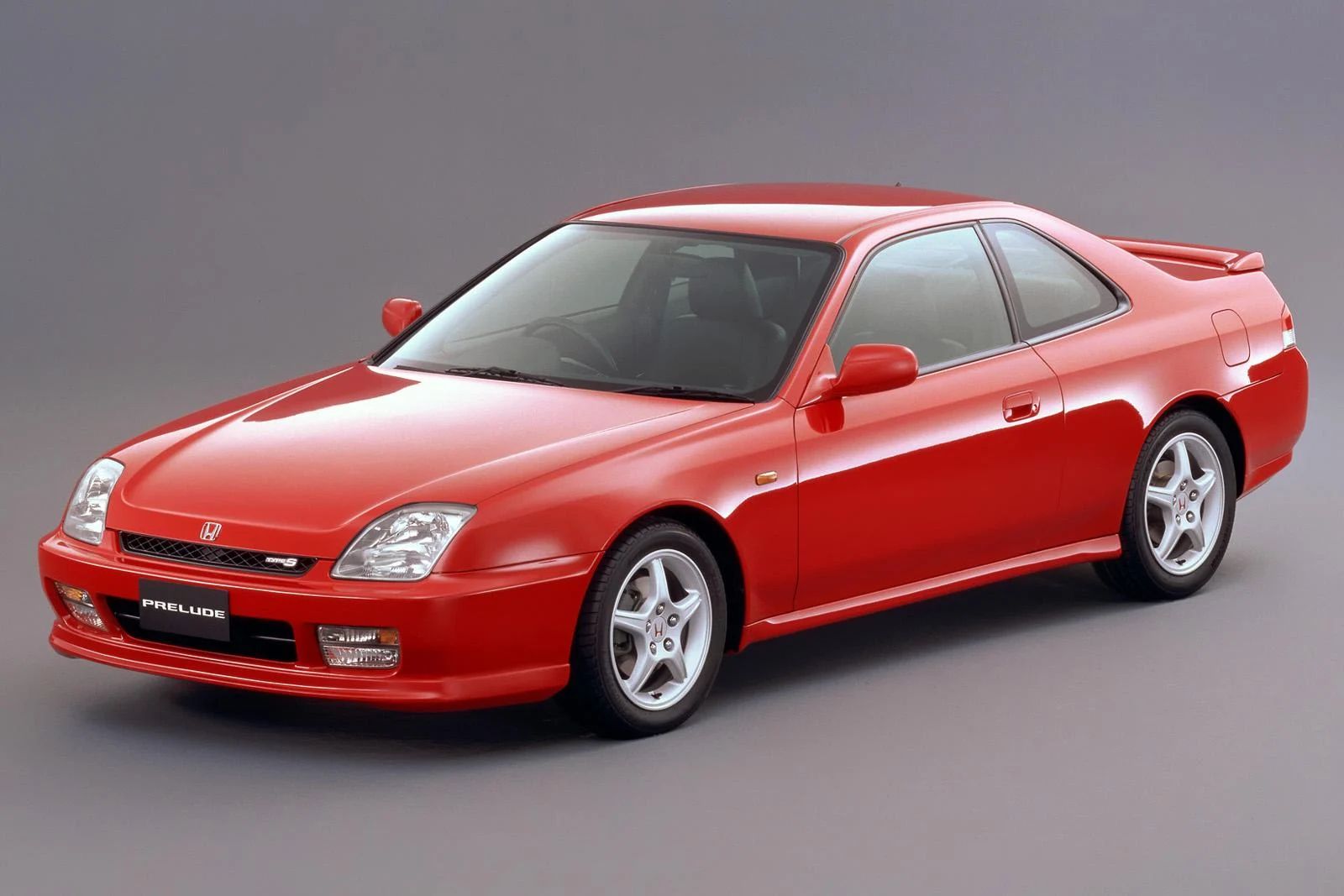
The roar of an engine, the precise feel of a clutch engaging, and the satisfying click of a gear lever slotting home—these are the sensory experiences that define true driving for countless enthusiasts. For decades, the manual transmission was not just an option; it was the very heart of performance driving, a direct conduit between man, machine, and road. It demanded skill, offered unparalleled engagement, and transformed a mere commute into an active, involving journey. This unique connection, rooted in mechanical symphony and driver input, fostered a generation of drivers who understood their vehicles on a deeply intimate level, appreciating every rev-match and perfectly executed shift.
However, a quiet revolution has been unfolding beneath the hoods of our favorite cars, subtly reshaping the automotive landscape. Today, manual transmissions are slowly but steadily vanishing from the market, gradually being replaced by faster, smarter, and more efficient automatics and dual-clutch systems. These modern alternatives promise superior performance figures, improved emissions, and an undeniable ease of use, appealing to a broad segment of consumers who prioritize convenience. While car companies often cite performance gains, stricter emissions regulations, and shifting consumer demand as the primary reasons for this transformation, many devoted drivers feel that something fundamental—a vital layer of connection and control—is irrevocably lost when there’s no third pedal to master.
This in-depth article embarks on a retrospective journey, highlighting some of the most iconic vehicles that have either completely abandoned the manual gearbox or are witnessing its rapid, undeniable retreat. We are looking back at the cars that helped define generations of driving enthusiasts, whose identities were often intertwined with the tactile joy of shifting gears themselves. As we trace the stick shift’s fading footprint, we ask a crucial question: what exactly are we truly losing in this relentless march toward automation and effortless speed? Join us as we explore the stories of these legends and lament the departure of a beloved driving art.
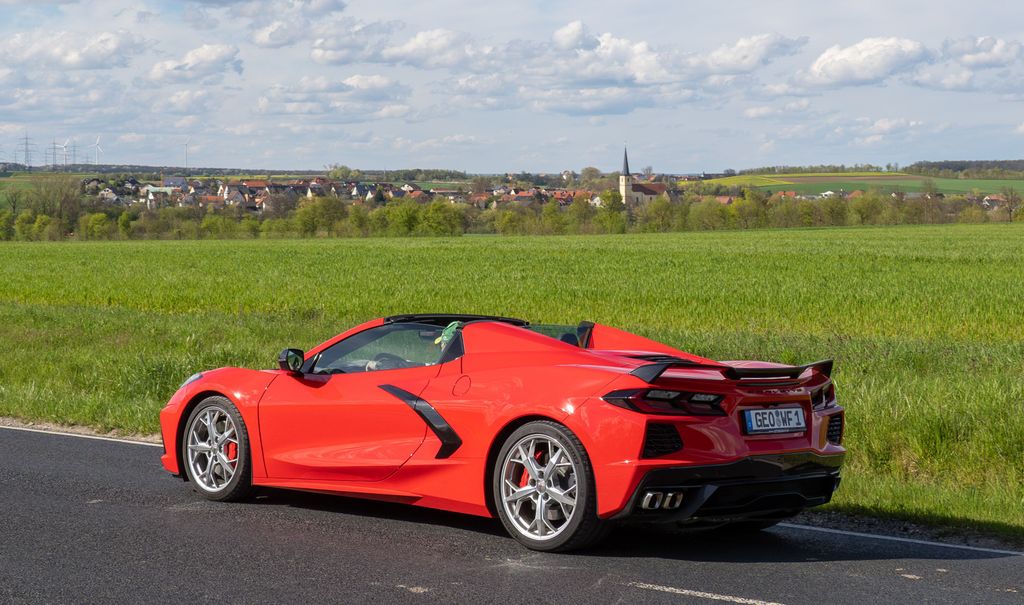
1. **Chevrolet Corvette (C8)**:America’s original sports car, the Chevrolet Corvette, has long been a towering symbol of North American performance, boasting an accomplished nameplate that resonates deeply with enthusiasts worldwide. For generations, the Corvette embodied raw power, accessible speed, and, crucially, the enduring option to manually row your own gears. This three-pedal setup provided a visceral, engaging driving experience that few rivals could truly match, cementing its status as a driver’s car celebrated for its muscular presence and direct involvement behind the wheel.
Yet, a monumental, era-defining shift occurred with the introduction of the C8 generation. The radical move to a mid-engine layout, a design choice long rumored and eagerly anticipated by some, marked an undeniable end for manual purists. With this profound redesign, Chevrolet made a definitive statement that reshaped its flagship sports car: there is no manual transmission available in the C8 Corvette, and the company has explicitly stated that there never will be. This decision sent profound ripples through the enthusiast community, signaling a major departure from the Corvette’s deeply rooted tradition of offering a stick shift.
Instead of a manual, the C8 Corvette now exclusively utilizes an 8-speed dual-clutch automatic transmission. From a purely performance-oriented perspective, it is difficult to argue with the results. This advanced gearbox shifts with a lightning-quick precision that no human could ever replicate, enabling models like the C8 Z06 to rev to an astounding 8,600 RPM and launch from 0 to 60 mph in under three seconds. This combination of brutal force and surgical efficiency delivers blistering acceleration and optimized fuel economy that perfectly align with modern performance benchmarks. However, for those who cherished the raw, mechanical feel and interactive challenge of older Vette manuals, this transition represented a significant turning point—a stark proof that even the most iconic nameplates are adapting to a world where “fast and easy” often wins out over the profound connection of pure driver engagement.
Car Model Information: 2019 Chevrolet Corvette Stingray
Name: Chevrolet Corvette
Caption: 2021 Chevrolet Corvette C8
Manufacturer: Chevrolet
Production: 1953–present
ModelYears: bulleted list
Assembly: bulleted list
Class: Sports car
BodyStyle: coupé
Layout: Front-engine, rear-wheel-drive layout,Rear mid-engine, rear-wheel-drive layout
Categories: 1950s cars, 1960s cars, 1970s cars, 1980s cars, 1990s cars
Summary: The Chevrolet Corvette is a line of American two-door, two-seater sports cars manufactured and marketed by General Motors under the Chevrolet marque since 1953. Throughout eight generations, indicated sequentially as C1 to C8, the Corvette is noted for its performance, distinctive styling, lightweight fiberglass or composite bodywork, and competitive pricing. The Corvette has had domestic mass-produced two-seater competitors fielded by American Motors, Ford, and Chrysler; it is the only one continuously produced by a United States auto manufacturer. It serves as Chevrolet’s halo car.
In 1953, GM executives accepted a suggestion by Myron Scott, then the assistant director of the Public Relations department, to name the company’s new sports car after the corvette, a small, maneuverable warship. Initially, a relatively modest, lightweight 6‑cylinder convertible, subsequent introductions of V8 engines, competitive chassis innovations, and rear mid-engined layout have gradually moved the Corvette upmarket into the supercar class. In 1963, the second generation was introduced in coupe and convertible styles. The first three Corvette generations (1953–1982) employed body-on-frame construction, and since the C4 generation, introduced in 1983 as an early 1984 model, Corvettes have used GM’s unibody Y‑body platform. All Corvettes used front mid-engine configuration for seven generations, through 2019, and transitioned to a rear mid-engined layout with the C8 generation.
Initially manufactured in Flint, Michigan, and St. Louis, Missouri, the Corvette has been produced in Bowling Green, Kentucky, since 1981, which is also the location of the National Corvette Museum. The Corvette has become widely known as “America’s Sports Car.” Automotive News wrote that after being featured in the early 1960s television show Route 66, “the Corvette became synonymous with freedom and adventure,” ultimately becoming both “the most successful concept car in history and the most popular sports car in history.”
Get more information about: Chevrolet Corvette
Buying a high-performing used car >>>
Brand: Chevrolet Model: Corvette
Price: $47,990 Mileage: 20,872 mi.
Read more about: Gearhead God: A High-Octane Tour Through John Cena’s Legendary American Muscle Car Empire

2. **BMW M5 (F90)**:The BMW M5 has consistently served as a benchmark for the high-performance sedan segment, a vehicle that masterfully blends executive luxury with supercar-baiting capabilities. Earlier generations, particularly those offered in the U.S. market, were highly celebrated for providing a manual transmission option. This allowed discerning drivers to fully exploit the potent engines with a direct, intimately engaging connection, fostering a legendary “hairy fun factor” that truly distinguished these M5s. Manual-equipped models, such as the E34, E39, and E60 generations, became darlings of enthusiasts who equally appreciated their prodigious speed and their deeply tactile driving experience.
However, with the arrival of the current F90 generation, the BMW M5 has regrettably abandoned this cherished heritage. This volcanically powerful machine now exclusively comes with an 8-speed automatic transmission, a stark contrast to the manual-equipped predecessors that drivers once adored. This pivotal decision by BMW was not made on a whim but stemmed from clear, pragmatic market considerations. The primary reason cited was a simple yet impactful truth: most buyers were consistently not choosing the manual option. As consumer preferences unmistakably shifted towards convenience, seamless operation, and effortless speed, BMW responded by aligning its offerings with prevalent market demand and the M5’s increasingly sophisticated, tech-heavy driving systems.
Boasting over 600 horsepower and an advanced all-wheel-drive system, the latest M5 is undeniably an incredibly capable and brutally fast sedan, capable of sprinting to 60 mph in approximately 3.1 seconds. It represents one of the finest examples of a supercar effectively masquerading as a sensible, everyday sedan. However, the unavoidable trade-off for this immense power and technological prowess is a palpable loss of that unique analog connection that many purists so deeply adored. For a significant segment of enthusiasts, the definitive absence of the manual gearbox removes a crucial layer of driver involvement, thereby diminishing the very essence of what made older M cars so uniquely rewarding, challenging, and intrinsically fun to drive.
Car Model Information: 1988 BMW M5 Base
Name: BMW M5
Caption: F90 M5 (left) and E28 M5 (right)
Manufacturer: BMW M
Production: 1984–present
Class: Executive car
Layout: Front-engine, rear-wheel-drive,(1984–1995, 1998–2016)
Related: BMW 5 Series,BMW M6
Categories: 1990s cars, 2000s cars, 2010s cars, 2020s cars, All Wikipedia articles written in British English
Summary: The BMW M5 is a high-performance version of the BMW 5 Series automobile developed by BMW’s motorsport division, BMW M GmbH, built from 1992 to 1995, 2006 to 2010, and since 2024. The M5 has continuously been produced in the saloon body style, in some countries also as a estate.
The first M5 model was hand-built beginning in late 1984 on the E28 535i chassis with a modified engine from the M1 that made it the fastest production saloon at the time. M5 models have been produced for every generation of the 5 Series since 1984, with occasional gaps in production (1995 to 1998, 2023 to 2024).
Get more information about: BMW M5
Buying a high-performing used car >>>
Brand: BMW Model: M5
Price: $90,000 Mileage: 26,556 mi.
Read more about: I’m an Insurance Agent: These 14 Vehicles Carry the Highest Risk Premiums of 2025

3. **Volkswagen Golf GTI (American Market)**:The Volkswagen Golf GTI stands as a definitive icon within the hot hatchback segment, a genuine legend among gearheads for its almost perfect blend of practicality, spirited performance, and playfully precise handling. For decades, the GTI has been synonymous with approachable fun, consistently offering a truly engaging driving experience that was profoundly amplified by its wonderfully tactile manual transmission. It earned its revered reputation as the “last word” in its segment, reliably delivering a thrilling combination of excitement and everyday utility within a compact, meticulously engineered package. Many drivers cherished it as both a dependable daily driver and an exhilarating weekend warrior.
Tragically, and to the dismay of many purists, the American-market Golf GTI is slated to completely lose its manual transmission option. This significant decision marks a pivotal turning point for a model that has long championed the stick shift, signifying its inevitable departure on what Volkswagen terms its “technological march to maturity.” While the forthcoming updated model is widely anticipated to be the fastest, most refined, and technologically advanced GTI yet, offering considerable advancements in both raw performance and integrated technology, the definitive loss of the manual option casts a somber shadow for enthusiasts who have always intrinsically associated the GTI with a three-pedal setup.
This strategic move underscores a broader, undeniable industry trend where convenience, advanced automatic systems, and ease of operation are increasingly taking precedence over traditional driver involvement and mechanical connection. Although new GTIs will undoubtedly deliver a more polished, efficient, and quite possibly quicker overall driving experience with their automatic counterparts, the absence of the manual will fundamentally alter the beloved character of this iconic hot hatch. It starkly highlights how even highly driver-focused vehicles are being systematically re-engineered to align with prevailing market preferences and broader technological trajectories, inevitably leaving a noticeable void for those who deeply appreciate the tactile feedback, precise control, and immersive satisfaction of a manual gearbox.
Car Model Information: 2023 Honda Civic EX
Name: Volkswagen Golf
Caption: Volkswagen Golf Mk8
Manufacturer: Volkswagen
Production: 1974–present
Class: Compact car
Predecessor: Volkswagen Beetle
Successor: Volkswagen ID.3
Alt: grey car (hatchback)
Categories: 1980s cars, 1990s cars, 2000s cars, 2010s cars, 2020s cars
Summary: The Volkswagen Golf () is a compact car/small family car (C-segment) produced by the German automotive manufacturer Volkswagen since 1974, marketed worldwide across eight generations, in various body configurations and under various nameplates – including as the Volkswagen Rabbit in the United States and Canada (Mk1 and Mk5), and as the Volkswagen Caribe in Mexico (Mk1).
The original Golf Mk1 was a front-engined, front-wheel drive replacement for the air-cooled, rear-engined, rear-wheel drive Volkswagen Beetle. Historically, the Golf is Volkswagen’s best-selling model and is among the world’s top three best-selling models, with more than 35 million units sold as of 2019.
Initially, most Golfs were hatchbacks, with the three-door version being somewhat more popular than the five-door. Other variants include an estate (Variant, from 1993), convertible (Cabriolet or Cabrio, from 1979), and a Golf-based saloon called the Jetta, Vento (from 1992), or Bora (from 1999). The Golf covers economy to high-performance market segments.
The Golf has won awards, including the World Car of the Year in 2009, with the Mk6 and in 2013 with the Mk7. Along with the Renault Clio and the Vauxhall Astra, the Golf is one of only three cars to have won European Car of the Year twice, in 1992 and 2013. The Golf has made the annual Car and Driver 10Best list multiple times. The Mk7 won the Motor Trend Car of the Year award in 2015, and the Mk1 GTI also won the award in 1985. The Mk4 won for the best-selling car in Europe in 2001.
Get more information about: Volkswagen Golf
Buying a high-performing used car >>>
Brand: Volkswagen Model: Golf GTI
Price: $23,541 Mileage: 56,979 mi.
Read more about: The 13 Worst-Performing Cars in Their Segment: A MotorTrend Deep Dive into Automotive Disappointments
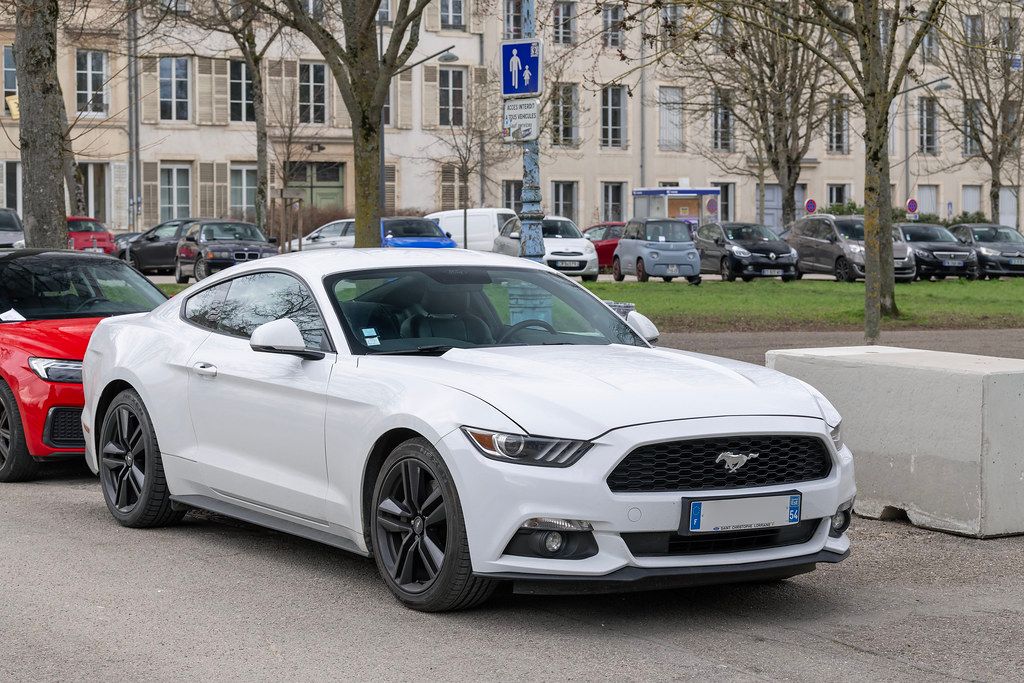
4. **Ford Mustang EcoBoost**:The pairing of a Ford Mustang with a manual transmission is almost legendary, a quintessential match that has truly stood the test of time and embodies the very spirit of American muscle car culture. For generations, the profound ability to physically row through the gears in a Mustang has been a core, defining part of its immense appeal, offering a visceral and direct connection to its prodigious power and exhilarating performance. Even as the Mustang meticulously evolved through numerous iterations, the manual option remained a steadfast choice for purists, serving as a powerful nod to its rich heritage and the unadulterated joy of complete driver control over the machine.
However, not all Mustang variants have been able to steadfastly maintain this cherished tradition. Specifically for climate-conscious or budget-minded buyers, the EcoBoost model quietly, and somewhat controversially, ditched its traditional three-pedal setup after the most recent seventh-generation (S650) update. This subtle yet profoundly significant change means that those opting for the more fuel-efficient, turbocharged four-cylinder engine variant can no longer experience the traditional, engaging stick shift. It serves as a clear, impactful indication of how market segmentation, combined with the relentless push for improved efficiency and diverse offerings, can regrettably lead to the quiet disappearance of beloved features within specific trim levels of even the most iconic automotive lines.
While this development undoubtedly represents a blow to a segment of devoted enthusiasts, the manual faithful are not entirely left in the lurch across the entire Mustang lineup. Ford has wisely and strategically continued to offer the stick shift option in the significantly more potent 5.0L V8-powered GT and the high-performance Dark Horse models. This thoughtful decision by Ford acutely acknowledges the enduring, core appeal of the manual transmission for performance-oriented buyers, while simultaneously allowing other trims to cater effectively to a broader market segment that prioritizes convenience, fuel economy, or alternative performance metrics. Nevertheless, the definitive removal of the manual from the EcoBoost trim stands as a poignant, impactful reminder of the ongoing attrition and gradual erosion faced by traditional gearboxes, even within such deeply revered and iconic automotive lineages.
Car Model Information: 2023 Honda Civic EX
Name: Ford EcoBoost engine
Manufacturer: Ford Motor Company
Aka: TwinForce (obsolete),EcoBoost SCTi,GTDi
Production: 2009–present
Predecessor: ubl
Configuration: Straight-3,Straight-4
Displacement: Cubic inch displacement#Engine displacement
Bore: V6 3.5: 3.64 in (92.5 mm),V6 3.0: 3.36 in (85.3 mm),V6 2.7: 3.30 in (83 mm),I4 2.3: 3.45 in (87.55 mm),I3 1.5: 3.31 in (84 mm),I3 1.0: 2.83 in (71.9 mm)
Stroke: V6 3.5: 3.41 in (86.7 mm),V6 3.0: 3.39 in (86 mm),V6 2.7: 3.30 in (83 mm),I4 2.3: 3.7 in (94.0 mm),I4 2.3 “MPC”: 4.0 in (102 mm),I4 2.0: 3.27 in (83.1 mm),I4 1.6: 3.2 in (81.4 mm),I3 1.5: 3.54 in (90 mm),I3 1.0: 3.2 in (82 mm)
Weight: V6 3.5: 449 lbs (203 kg),V6 3.0: 445 lbs (202 kg),V6 2.7: 440 lbs (200 kg),I4 2.0: 328 lbs(149 kg),I4 1.6: 251 lbs (114 kg),I3 1.0: 213 lbs (97 kg)
Block: Compacted graphite iron
Head: Aluminum
Valvetrain: DOHC
Turbocharger: Borg Warner
Fuelsystem: Gasoline direct injection
Management: CAN-Bus
Fueltype: Gasoline
Oilsystem: Wet sump
Coolingsystem: Radiator (engine cooling)
Compression: V6 3.5: 10.0:1(10.5:1 MY2017),V6 3.0: 9.5:1,V6 2.7: 10.3:1,I4 2.3: 9.5:1
,I4 2.3 “MPC”: 10.6:1,I4 2.0: 10.0:1,I4 1.6: 10.0:1,I3 1.5: 9.7:1
Categories: 2009 introductions, All Wikipedia articles in need of updating, All articles to be expanded, All articles with bare URLs for citations, All articles with dead external links
Summary: EcoBoost is a series of turbocharged, direct-injection gasoline engines produced by Ford and originally co-developed by FEV Inc. (now FEV North America Inc.). EcoBoost engines are designed to deliver power and torque consistent with those of larger-displacement (cylinder volume) naturally aspirated engines, while achieving up to 20% better fuel efficiency and 15% fewer greenhouse emissions, according to Ford. The manufacturer sees the EcoBoost technology as less costly and more versatile than further developing or expanding the use of hybrid and diesel engine technologies. EcoBoost engines are broadly available across the Ford vehicle lineup.
Get more information about: Ford EcoBoost engine
Buying a high-performing used car >>>
Brand: Ford Model: Mustang EcoBoost
Price: $23,541 Mileage: 56,979 mi.
Read more about: Gearhead God: A High-Octane Tour Through John Cena’s Legendary American Muscle Car Empire

5. **Alfa Romeo Giulia (North American Market)**:Alfa Romeo possesses a truly storied history, a heritage built upon crafting exquisite vehicles that exude an undeniable blend of passionate engineering, distinctive Italian style, and exhilarating driving verve. In the vibrant era of the 1960s, the original Giulia was widely celebrated, adeptly serving as both a sensible, elegant sedan and a sun-soaked, engaging roadster, embodying the brand’s profound commitment to dynamic driving excitement. When the modern Giulia sedan finally made its much-anticipated debut in the North American market decades later, it generated considerable excitement. This was particularly true for the range-topping 505-horsepower Quadrifoglio trim, which proudly boasted a direct lineage of Ferrari DNA and promised an unequivocally exhilarating Italian driving experience.
The enticing prospect of a powerful, stylish, and high-performance Italian sports sedan equipped with a manual transmission was, for many enthusiasts, a fervent dream. The sheer allure of combining Alfa Romeo’s passionate, driver-centric engineering with the direct, engaging control of a stick shift seemed almost too good to be true, a perfect confluence of heritage and modern performance. However, a significant and deeply disappointing reality awaited those who harbored such high hopes: the North American market Giulia was, quite surprisingly, never offered with a manual gearbox. This glaring omission was a profound point of contention for purists who, quite justifiably, expected a car with such an illustrious sporting pedigree to inherently offer the most engaging and traditional transmission option.
While the automatic transmissions meticulously offered in the Giulia are, without question, supremely capable and undoubtedly contribute significantly to the car’s impressive overall performance figures and rapid acceleration, the definitive lack of a manual option from its very inception in the North American market meant that a substantial segment of dedicated driving enthusiasts felt profoundly overlooked. This situation starkly highlights how even manufacturers with the strongest performance heritage and a reputation for driver focus must ultimately make strategic decisions based on perceived market demand, prevailing consumer preferences, and broad operational efficiencies. These decisions, at times, regrettably come at the expense of offering a purist-preferred, deeply interactive option. The Giulia’s case thus stands as a vivid example of an iconic nameplate arriving in a crucial market without the manual transmission that many passionate drivers felt it inherently deserved and demanded.
Car Model Information: 2023 Honda Civic EX
Name: Alfa Romeo Giulia (Type 105)
Caption: Alfa Romeo Giulia Super
Manufacturer: Alfa Romeo
Production: 1962–1978
Assembly: Portello (district of Milan),Alfa Romeo Portello Plant,Milan
Designer: Giuseppe Scarnati
Class: Compact executive car
BodyStyle: notchback,Sedan (car)
Layout: Front-engine, rear-wheel-drive layout
Related: Alfa Romeo 105/115 Series Coupés,Alfa Romeo 1750 Berlina,Alfa Romeo Gran Sport Quattroruote,Alfa Romeo Spider
Engine: Alfa Romeo Twin Cam engine,1.6 L Twin Cam I4 (petrol),Perkins Engines
Transmission: Manual transmission
Wheelbase: 2510 mm
Abbr: on
Length: 4140 mm
Width: 1560 mm
Height: 1430 mm
Weight: convert
Predecessor: Alfa Romeo Giulietta (750/101)
Successor: Alfa Romeo Giulietta (116)
Sp: uk
Categories: 1970s cars, Alfa Romeo vehicles, Articles with short description, CS1 Italian-language sources (it), Cars introduced in 1962
Summary: Alfa Romeo Giulia (Italian pronunciation: [ˈdʒuːlja]) is the name of three not directly related model (line)s from Italian carmaker Alfa Romeo. The first were the four-door Type 105 entry-level compact executive sports sedans produced from 1962 to 1978; the second are the updated (mainly up-engined) Spider, Sprint, and Sprint Speciale Alfa Giuliettas, and in 2015, Alfa Romeo revived the Giulia name, again for a compact executive car (type 952).
Alfa Romeo was one of the first mainstream manufacturers to put a powerful engine in a light-weight 1 tonne (2,205 lb) four-door car for mass production. The Type 105 Giulia was equipped with a light alloy twin overhead camshaft four-cylinder engine similar to that of the earlier Giulietta (750/101) range, available in 1.3-litre (1,290 cc) and 1.6-litre (1,570 cc) versions. Various configurations of carburetors and tuning produced power outputs from about 80 to about 110 bhp (55 to 75 kW), coupled in most cases to 5-speed manual transmission.
Giulia sedans were noted for lively handling and impressive acceleration among small European four-door sedans of their era, especially considering modest engine sizes offered. The popular Super version with the twin carburettor 1.6 litre engine had a top speed of 170 km/h (106 mph) and accelerated from 0 to 100 km/h (62 mph) in about 12 seconds, better than many sports cars of the late 1960s and early 1970s. When leaving the factory all variations of the Giulia originally fitted either Pirelli Cinturato 165HR14 or 155HR15 tyres (CA67).
The styling of the three-box four-door sedan was somewhat wanting, with its three main volumes all truly square and boxy, softened only by detailing of the front and bonnet, roofline, and boot. Using a wind tunnel during development helped designers to find a remarkably aerodynamic shape with a drag coefficient of Cd=0.34, particularly low for a saloon of the era.
The Giulia Spider was succeeded by the Alfa Romeo Spider (105/115) in 1966.
Get more information about: Alfa Romeo Giulia
Buying a high-performing used car >>>
Brand: Alfa Romeo Model: Giulia
Price: $23,541 Mileage: 56,979 mi.
Read more about: Lemon in the Garage: 14 Models Drivers Vow Never to Buy Again Due to Poor Build Quality
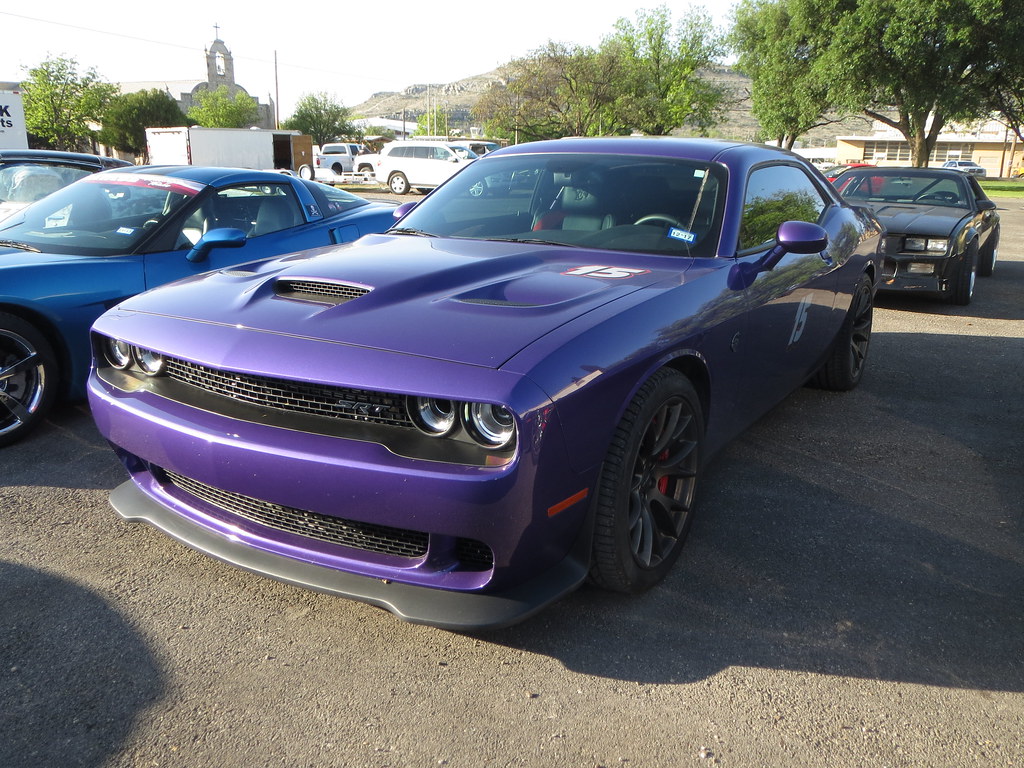
6. **Dodge Challenger Hellcat**:The Dodge Challenger Hellcat is an unadulterated, roaring ode to pure American muscle, a beast of a car built solely for brute force and spectacular, tire-shredding performance. From its very inception, it delivered a jaw-dropping 707 horsepower from its formidable 6.2-liter supercharged V8 engine in base form, immediately establishing itself as a true burnout machine and a legend in its own right. For a brief, glorious period, this monument to immense horsepower could be paired with a 6-speed manual transmission, offering drivers the thrilling, if somewhat challenging, experience of personally wrestling all that untamed power through their own precise gear selections. It was a bold proposition for the truly audacious, promising maximum driver engagement for those brave enough to attempt to tame its truly immense torque.
However, the highly sought-after manual option for the Hellcat eventually, and somewhat inevitably, disappeared from the lineup with the final years of its production. The primary reason for its discontinuation was not, in fact, a lack of desire for speed or driver involvement, but rather a profound practical limitation: the sheer, overwhelming amount of torque—exceeding 650 lb-ft—proved to be incredibly taxing on the clutch assemblies, leading to significant reliability concerns and increased maintenance. Furthermore, the robust and incredibly efficient 8-speed automatic transmission, which subsequently became the sole offering, was inherently quicker and far more consistent in effectively delivering the Hellcat’s explosive, unbridled acceleration. This made a compelling and undeniable case for the automatic, especially in a car fundamentally built more for raw, straight-line speed and dramatic burnouts than for the surgical precision of manual shifting.
For Dodge, the ultimate decision unequivocally came down to prioritizing the automatic transmission’s proven reliability and its superior, consistent performance metrics. While a manual Hellcat undeniably offered a unique, deeply challenging, and immensely rewarding driving experience, the brand astutely recognized that the overwhelming majority of its customer base, and indeed the car’s fundamental purpose, were far better served by the robust and quicker automatic. The Hellcat’s compelling story is a powerful and illustrative example of how extreme performance aspirations, coupled with the relentless pursuit of maximum reliability and uncompromised speed, can lead even the most audacious and muscle-bound vehicles to reluctantly shed their manual gearbox options, effectively sacrificing a degree of pure driver engagement for sheer, unadulterated power delivery and enhanced durability.
Car Model Information: 2023 Honda Civic EX
Name: Dodge Challenger (2008)
Production: 2008–2023
ModelYears: 2008–2023
Assembly: Brampton, Ontario
Designer: Brian Nielander,
Predecessor: ubl
Successor: Dodge Charger (2024)
Caption: 2017 Dodge Challenger R/T Scat Pack
Manufacturer: Dodge
Class: Muscle car
BodyStyle: notchback,coupe
Engine: unbulleted list
Abbr: on
Order: Chrysler Hemi engine#6.4 Apache / 392 Apache,V8 engine
Layout: Front-engine, rear-wheel-drive layout,Front-engine, all-wheel-drive layout
Transmission: Ultradrive#42RLE,5G-Tronic,Tremec TR-6060 transmission,ZF 8HP transmission
Wheelbase: cvt
Length: cvt
Width: cvt
Height: cvt
Categories: 2000s cars, 2010s cars, 2020s cars, All articles that are excessively detailed, All articles with style issues
Summary: The Dodge Challenger is a full-size muscle car that was introduced in early 2008 originally as a rival to the evolved fifth-generation Ford Mustang and the fifth-generation Chevrolet Camaro.
In November 2021, Stellantis announced that 2023 model year would be the final model year for both the LD Dodge Charger and LA Dodge Challenger, as the company will focus its future plans on electric vehicles rather than fossil fuel powered vehicles, due to tougher emissions standards required by the Environmental Protection Agency for the 2023 model year. Challenger production ended on December 22, 2023, and the Brampton, Ontario assembly plant will be re-tooled to assemble an electrified successor.
Get more information about: Dodge Challenger (2008)
Buying a high-performing used car >>>
Brand: Dodge Model: Challenger Hellcat
Price: $23,541 Mileage: 56,979 mi.
Read more about: Are You Driving a ‘Rude’ Car? We Asked, You Answered: 12 Vehicles With a Terrible Driver Image
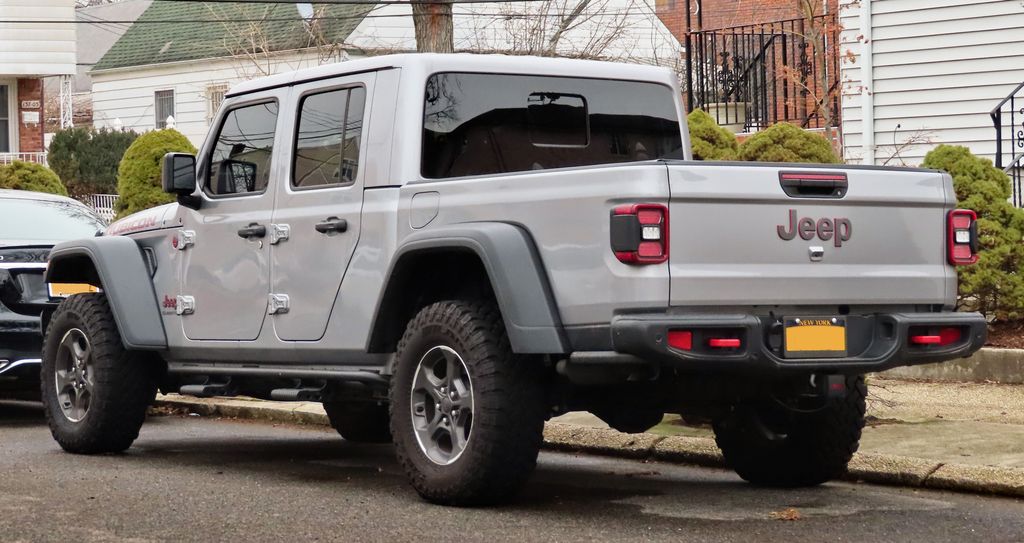
7. **Jeep Gladiator**:The Jeep Wrangler has long been a preeminent icon of unparalleled off-road capability and fiercely independent, rugged spirit, consistently offering a manual transmission option for those ardent adventurers who crave direct, unmediated control over their explorations. Its robust pickup truck counterpart, the Gladiator, was specifically engineered to extend this legendary spirit into the highly versatile utility segment, promising the very same fabled off-road prowess harmoniously combined with the practical versatility of a truck bed. For dedicated enthusiasts who profoundly appreciate the tactile involvement and mechanical purity of a stick shift, the Gladiator initially presented an exceptionally attractive proposition, seamlessly marrying robust functionality with traditional, deeply engaging driver involvement.
However, to the significant disappointment of many purists and off-road aficionados, the manual option for the Jeep Gladiator has been definitively cancelled for the forthcoming 2025 model year. This specific discontinuation means that the Gladiator, once a promising beacon for manual-equipped pickups within the Stellantis family, will regrettably no longer offer the revered three-pedal setup. This consequential change leaves its venerable sibling, the Wrangler, as the solitary manual car remaining under the vast Stellantis umbrella specifically for the U.S. market. This decision profoundly reflects a broader, undeniable industry trend, even within highly specialized and demanding segments like dedicated off-roading, where prevailing market forces are increasingly favoring automatic transmissions for their inherent convenience, user-friendliness, and undeniable ease of operation. This is especially true for vehicles that frequently navigate profoundly challenging terrains or frequently serve as primary daily drivers in varied urban and rural environments.
For serious off-roaders who unequivocally prefer and demand better, more granular control of the throttle and engine braking while courageously tackling the most challenging trails and obstacles, the manual gearbox has historically always been an exceptionally attractive and indispensable option, allowing for precise power modulation and intricate descent control. The Gladiator’s manual transmission provided that critical, direct connection, making it a truly compelling choice for a niche but intensely dedicated segment of buyers. Its regrettable removal from the lineup starkly underscores how even in segments where direct driver control and visceral engagement are exceptionally highly valued, the persistent pressures of manufacturing simplification, overwhelming consumer preference for automatics, and undeniable cost efficiencies are collectively leading to the gradual, yet inexorable, phasing out of manual options across virtually all automotive sectors. This recent change leaves a noticeable and deeply felt void for those who steadfastly believed the manual transmission was an absolutely essential tool for serious, uncompromised trail driving and adventure.
Continuing our deep dive into the vanishing world of manual transmissions, we now turn our attention to additional legends whose stick-shift options are either disappearing or fighting a losing battle against the tide of automation. This next set of vehicles further illustrates how evolving market demands, the relentless march of advanced automatic technologies, and undeniable shifts in driver preferences are collectively pushing the stick shift towards a perilous future, leaving manual purists to ponder what comes next for their beloved driving art. The narratives of these cars echo a powerful truth: even in segments where engagement is paramount, convenience and efficiency often dictate the path forward.
Car Model Information: 2021 Jeep Gladiator Sport
Categories: All set index articles, Articles with short description, Monitored short pages, Set index articles on cars, Short description is different from Wikidata
Summary: The Jeep Gladiator may refer to:
Jeep Gladiator (SJ), a pickup truck made by Jeep from 1962 to 1988, known as the Jeep J-Series after 1971
Jeep Gladiator (JT), a pickup truck made by Jeep from 2019 onwards
Get more information about: Jeep Gladiator
Buying a high-performing used car >>>
Brand: Jeep Model: Gladiator
Price: $33,000 Mileage: 48,340 mi.
Read more about: Gear Up for Goodbye: 7 Beloved Models Waving Farewell to Manual Transmissions in 2025
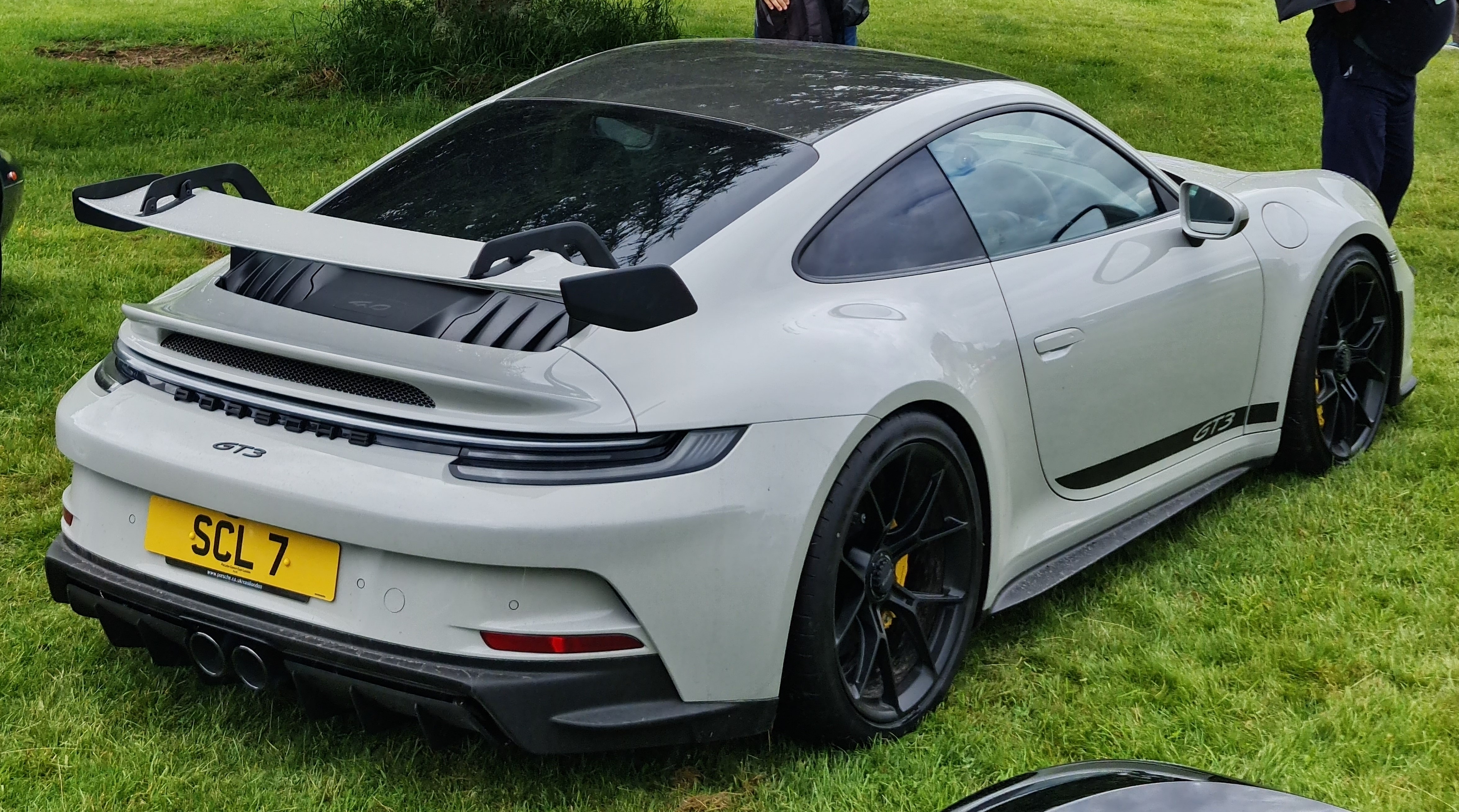
8. **Porsche 911 GT3 (992)**:Porsche, a name synonymous with precision engineering and an unyielding commitment to driving purity, has long stood as one of the few stalwart carmakers still valiantly fighting for the manual transmission. Within its revered lineup, the latest 911 GT3 (992 generation) still generously offers a 6-speed stick. This is a cause for celebration among purists, a beacon of hope in a rapidly automating landscape, allowing drivers to engage directly with its high-revving, naturally aspirated masterpiece of an engine.
However, this manual option, while available, is regrettably no longer the default choice. A significant majority of buyers are consistently opting for the lightning-quick, 7-speed PDK dual-clutch transmission. While the allure of manual engagement remains strong for a dedicated niche, the undeniable performance advantage and effortless convenience of the PDK system prove too compelling for most, showcasing a tangible shift in what even hardcore enthusiasts prioritize in their ultimate driving machines.
Indeed, the 911 GT3 itself is an absolute performance monster, powered by a 4.0-liter flat-six engine that screams to an astounding 9,000 RPM, unleashing a potent 502 horsepower. It is a vehicle engineered for the pinnacle of driving dynamics and track prowess. Yet, even in a car this extraordinarily special and driver-focused, Porsche has candidly admitted that automatics overwhelmingly dominate the order sheets, simply because they are unequivocally faster on track, more efficient, and undeniably easier to live with in the varied contexts of daily driving.
Car Model Information: 2023 Honda Civic EX
Name: Porsche 911 (992)
Caption: Porsche 911 Carrera Cabriolet (992.2)
Manufacturer: Porsche
Aka: Porsche 911,Porsche Carrera
Production: 2018–present
Assembly: Stuttgart,Zuffenhausen
Designer: Michael Mauer
Class: Sports car
BodyStyle: coupé,targa top,convertible
Platform: Volkswagen Group MMB platform
Layout: Rear-engine, rear-wheel-drive layout,Rear-engine, four-wheel-drive layout
Engine: Petrol,twin-turbo,3.7 L twin-turbocharged flat-6,naturally aspirated engine,Mild Hybrid,turbocharged,3.6 L twin-turbocharged flat-6
Motor: Synchronous motor
Transmission: manual transmission,7-speed manual,dual-clutch transmission,dual-clutch transmission
Drivetrain: Hybrid electric vehicle
Battery: Lithium-ion battery
Wheelbase: 2450 mm
Abbr: on
Length: convert
Width: convert
Height: convert
Weight: convert
Sp: uk
Predecessor: Porsche 911 (991)
Categories: 2020s cars, All-wheel-drive vehicles, All articles needing additional references, All articles with unsourced statements, Articles needing additional references from September 2025
Summary: The Porsche 992 is the eighth and current generation of the Porsche 911 sports car, which was introduced at the Porsche Experience Center in Los Angeles on 27 November 2018.
Get more information about: Porsche 911 (992)
Buying a high-performing used car >>>
Brand: Porsche Model: 911 GT3 (992)
Price: $23,541 Mileage: 56,979 mi.
Read more about: Driving Flashy Sports Cars: The Investment Playbook Financial Advisors See in Top Models for 2025
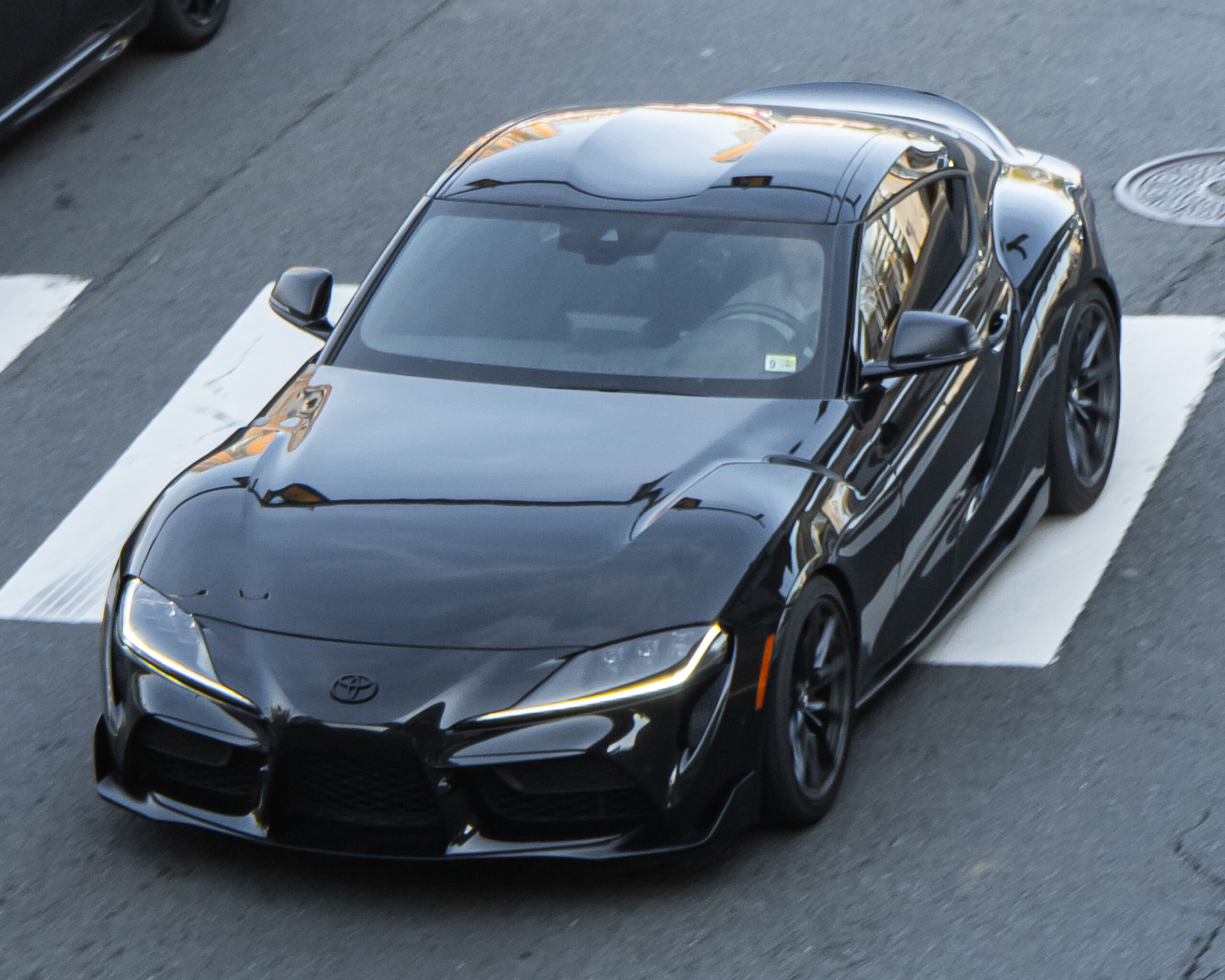
9. **Toyota Supra (A90)**:When the highly anticipated fifth-generation (A90) Toyota Supra made its long-awaited debut in 2019, the collective roar from fans was deafening, centered almost entirely around one significant omission: the glaring absence of a manual transmission option. For its initial years on the market, Toyota exclusively offered an 8-speed automatic, a decision that left a substantial segment of purists feeling profoundly underserved and questioning the true sporting intent of the revitalized legend.
It wasn’t until 2023, several years into its production run, that a 6-speed manual transmission finally arrived, a belated but welcome addition. Yet, by this point, much of the initial buzz and fervent anticipation surrounding the manual’s potential had regrettably shifted elsewhere. While Toyota stated its desire to “perfect” the manual specifically for this car, the more pragmatic reality was that the market for traditional, row-your-own transmissions was shrinking fast, and the Supra’s BMW-based platform naturally facilitated an automatic-first launch.
The Supra’s journey with the manual exemplifies the delicate balance manufacturers face. While a manual option eventually materialized, its delayed introduction speaks volumes about the commercial challenges. The initial automatic-only strategy reflected a cautious approach to market realities, underscoring how even the most celebrated nameplates, once synonymous with driver involvement, must navigate a landscape where automated convenience often takes precedence over purist desires.
Car Model Information: 2022 Toyota Supra 3.0 Premium
Name: Toyota Supra
Caption: Toyota GR Supra (J29/DB)
Manufacturer: Toyota
Aka: unbulleted list
Production: unbulleted list
Class: Sports car
BodyStyle: fastback,coupé
Layout: Front-engine, rear-wheel-drive layout
Predecessor: Toyota Celica (A20)
Categories: 1980s cars, 1990s cars, 2000s cars, 2010s cars, 2020s cars
Summary: The Toyota Supra is a sports car and grand tourer manufactured and developed by the Toyota Motor Corporation beginning in 1978. The name “supra” is a definition from the Latin prefix, meaning “above”, “to surpass” or “go beyond”. The initial four generations of the Supra were produced from 1978 to 2002. The fifth generation has been produced since March 2019 and later went on sale in May 2019. The styling of the original Supra was derived from the Toyota Celica, but it was longer. Starting in mid-1986, the A70 Supra became a separate model from the Celica. In turn, Toyota also stopped using the prefix Celica and named the car Supra. Owing to the similarity and past of the Celica’s name, it is frequently mistaken for the Supra, and vice versa. The first, second and third generations of the Supra were assembled at the Tahara plant in Tahara, Aichi, while the fourth generation was assembled at the Motomachi plant in Toyota City. The 5th generation of the Supra is assembled alongside the G29 BMW Z4 in Graz, Austria by Magna Steyr. The Supra traces much of its roots back to the 2000GT owing to an inline-6 layout. The first three generations were offered with a direct descendant to the Crown’s and 2000GT’s M engine. Interior aspects were also similar, as was the chassis code “A”. Along with this name, Toyota also included its own logo for the Supra. It was derived from the original Celica logo, being blue instead of orange. This logo was used until January 1986, when the A70 Supra was introduced. The new logo was similar in size, with orange writing on a red background, but without the dragon design. That logo, in turn, was on Supras until 1991 when Toyota switched to its current oval company logo. The dragon logo was a Celica logo regardless of what colour it was. It appeared on the first two generations of the Supra because they were officially Toyota Celicas. The dragon logo was used for the Celica line until it was also discontinued. In 1998, Toyota ceased sales of the fourth-generation Supra in the United States. Production of the fourth-generation Supra for worldwide markets ended in 2002. In January 2019, the fifth-generation Supra, which was co-developed with the G29 BMW Z4, was introduced.
Get more information about: Toyota Supra
Buying a high-performing used car >>>
Brand: Toyota Model: Supra
Price: $53,983 Mileage: 30,565 mi.
Read more about: Revived Legends: Unpacking the Surprising Comebacks of Iconic Automotive Stars
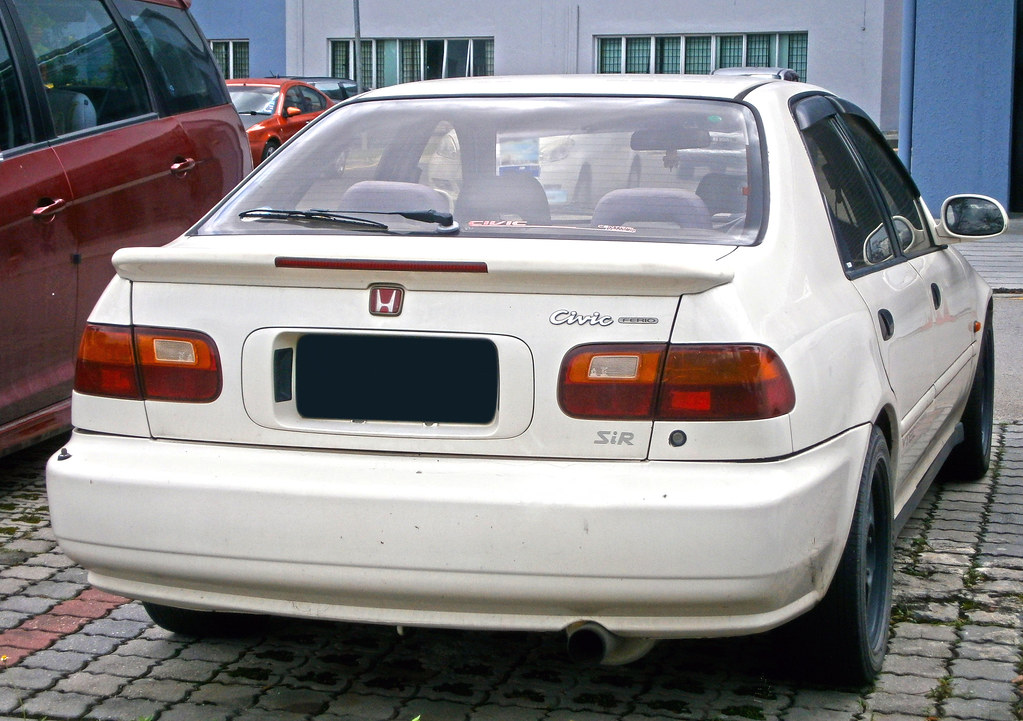
10. **Honda Civic Si**:Honda has long been recognized as one of the last steadfast holdouts for offering truly affordable manual transmissions, particularly within its enthusiast-focused Civic Si lineup. The Civic Si proudly continues to exclusively offer a 6-speed manual transmission, a testament to its enduring commitment to accessible driver engagement. For many, it remains a vibrant, tactile joy to drive, connecting driver and machine through its crisp shifts and precise gate action.
However, even this dedicated bastion of manual purity is regrettably starting to feel like an endangered species. Industry data clearly shows that sales of manual Civics have been steadily dropping, as an increasing number of buyers are opting for the continuously variable transmission (CVT) found in lower trims or, more broadly, crossing over to the booming SUV segment. This trend highlights a fundamental shift in consumer priorities, where ease of use and perceived practicality are often winning out over the profound connection of a manual.
Making 200 horsepower from a spirited 1.5-liter turbocharged inline-four engine, the Civic Si is light, incredibly tossable, and an absolute joy to drive with its well-sorted manual gearbox. It perfectly embodies the spirit of an engaging, affordable performance car. But vehicles like the Si are becoming increasingly harder to find and justify for manufacturers, not because they aren’t inherently great driving machines, but because their specialized appeal no longer moves the sales needle with the same impactful force it once did, making them niche offerings in a mass market.
Read more about: Are You Driving a ‘Rude’ Car? We Asked, You Answered: 12 Vehicles With a Terrible Driver Image
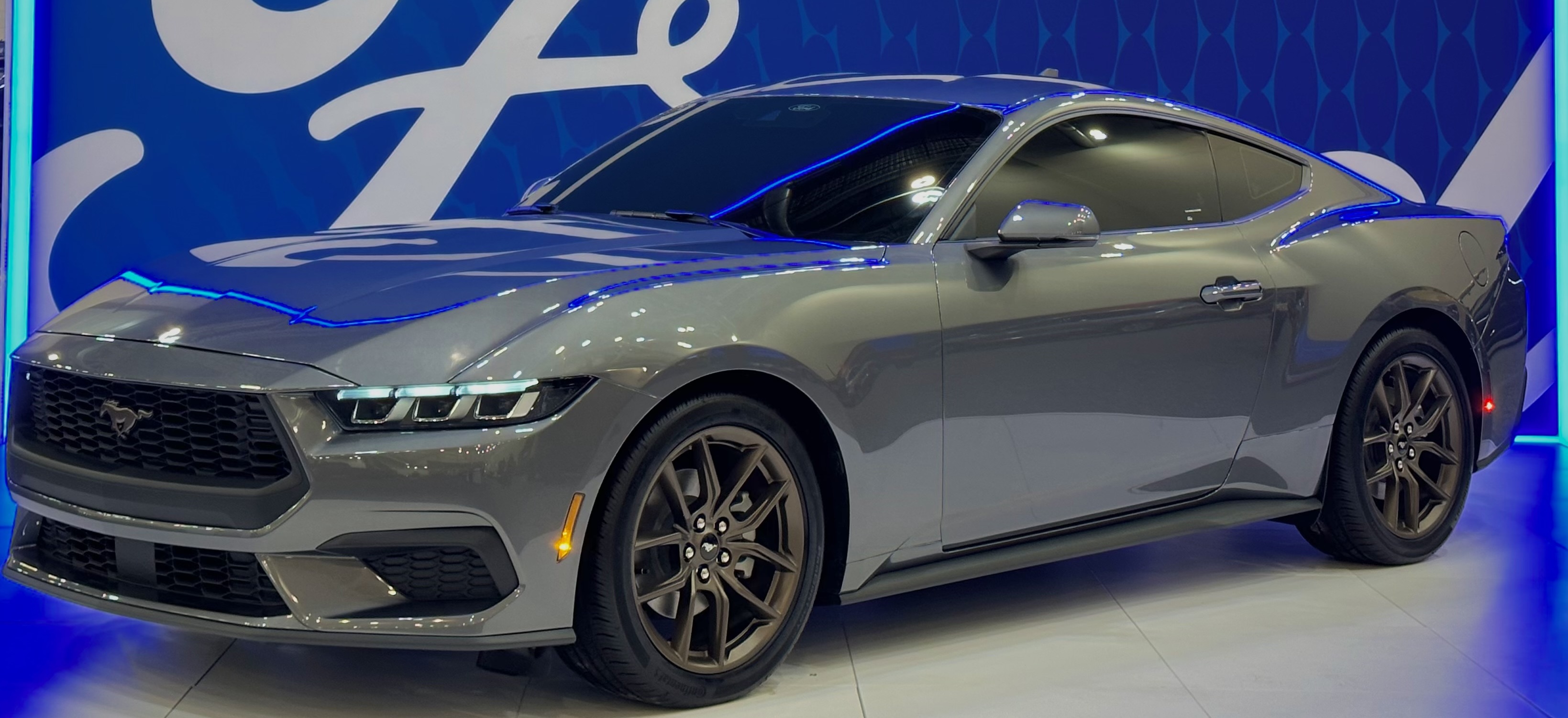
11. **Ford Mustang GT (S650)**:The latest generation of the Ford Mustang, the S650, still commendably offers a manual transmission paired with its robust 5.0-liter V8 engine. This enduring option is undoubtedly worth celebrating for muscle car aficionados and purists alike, preserving a vital part of the Mustang’s storied heritage and its deep connection to the classic American driving experience. It’s a powerful nod to tradition in an accelerating world of technological advancement.
Despite this commendable offering, the writing, however, is unequivocally on the wall. Automatic-equipped Mustangs now significantly outsell their manual counterparts by a wide margin, and the sophisticated 10-speed automatic transmission is simply faster in almost every measurable performance metric. This widespread preference for the automatic underscores a broader shift, even among the most passionate drivers, towards maximizing performance and convenience.
Ford, acutely aware of its diverse audience, has continued to cater to the manual faithful in its high-performance GT and Dark Horse models. However, the combined pressures of increasingly stringent emissions regulations and prevailing global demand trends will almost certainly push future versions of the Mustang towards greater electrification, which will inevitably lead to automatic-only setups. This makes the current S650 generation one of the last, truly traditional Mustangs to embrace the stick shift, even if the GT still allows you to row your own gears for now.
Car Model Information: 2023 Honda Civic EX
Name: Ford Mustang
Caption: 2018 Ford Mustang GT 5.0
Aka: Ford T5 (Germany)
Manufacturer: Ford Motor Company
Production: March 1964 – present
ModelYears: 1965–present
Class: Unbulleted list
BodyStyle: Unbulleted list
Layout: Front-engine, rear-wheel-drive layout
Categories: 1970s cars, 1980s cars, 1990s cars, 2+2 coupés, 2000s cars
Summary: The Ford Mustang is an American automobile manufactured and marketed by Ford since 1964, as Ford’s longest nameplate in continuous production. Currently in its seventh generation, it is the fifth-best selling Ford car nameplate. The namesake of the “pony car” automobile segment, the Mustang was developed as a highly styled line of sporty coupes and convertibles derived from existing model lines, initially distinguished by its pronounced “long hood, short deck” proportions.
Originally predicted to sell 100,000 vehicles yearly, the 1965 Mustang became the most successful vehicle launch since the 1927 Model A. Introduced on April 17, 1964 (16 days after the Plymouth Barracuda), over 400,000 units were sold in its first year; the one-millionth Mustang was sold within two years of its launch. In August 2018, Ford produced the 10-millionth Mustang; matching the first 1965 Mustang, the vehicle was a 2019 Wimbledon White convertible with a V8 engine.
The success of the Mustang launch led to multiple competitors from other American manufacturers, including the Chevrolet Camaro and Pontiac Firebird (1967), AMC Javelin (1968), and Dodge Challenger (1970). It also competed with the Plymouth Barracuda, which was launched around the same time. The Mustang also had an effect on designs of coupes worldwide, leading to the marketing of the Toyota Celica and Ford Capri in the United States (the latter, by Lincoln-Mercury). The Mercury Cougar was launched in 1967 as a unique-bodied higher-trim alternative to the Mustang; during the 1970s, it included more features and was marketed as a personal luxury car.
From 1965 until 2004, the Mustang shared chassis commonality with other Ford model lines, staying rear-wheel-drive throughout its production. From 1965 to 1973, the Mustang was derived from the 1960 Ford Falcon compact. From 1974 until 1978, the Mustang (denoted Mustang II) was a longer-wheelbase version of the Ford Pinto. From 1979 until 2004, the Mustang shared its Fox platform chassis with 14 other Ford vehicles (becoming the final one to use the Fox architecture). Since 2005, the Mustang has used the D2C platform, unique to the Mustang.
Through its production, multiple nameplates have been associated with the Ford Mustang series, including GT, Mach 1, Boss 302/429, Cobra (separate from Shelby Cobra), and Bullitt, along with “5.0” fender badging (denoting 4.9 L OHV or 5.0 L DOHC V8 engines).
Get more information about: Ford Mustang
Buying a high-performing used car >>>
Brand: Ford Model: Mustang GT
Price: $23,541 Mileage: 56,979 mi.
Read more about: 15 American Cars That Command Shockingly High Prices Today: A Deep Dive into Automotive Excellence
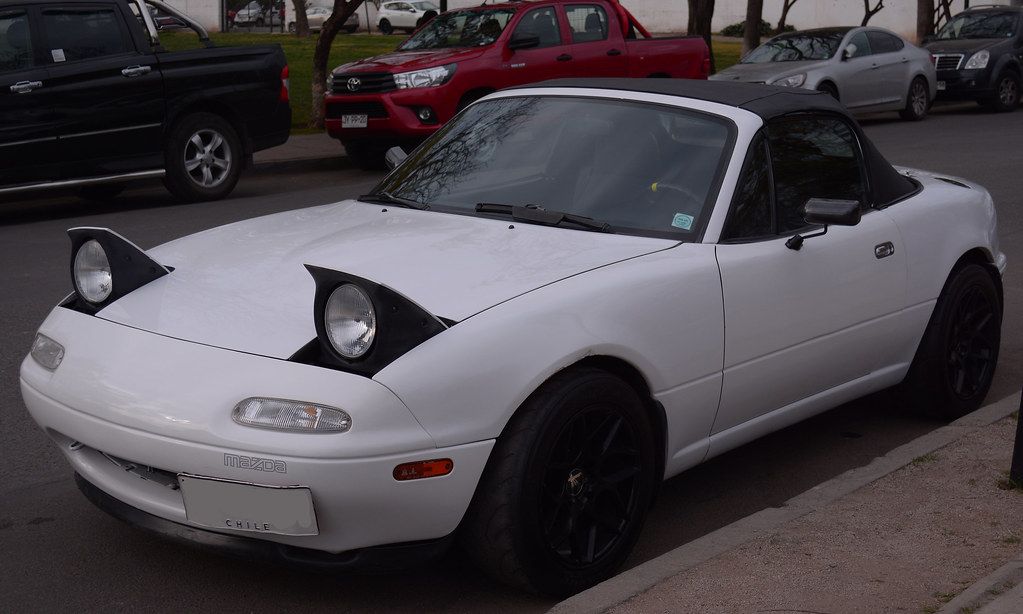
12. **Mazda MX-5 Miata**:The Mazda MX-5 Miata, a perennial favorite among enthusiasts globally, continues its unwavering dedication to delivering what it does best: an unparalleled lightweight, rear-wheel-drive experience, universally accompanied by its wonderfully tactile 6-speed manual transmission. Mazda has famously not ditched the stick yet, a testament to its deeply held philosophy of Jinba Ittai—the unity of horse and rider—which the manual gearbox so perfectly embodies.
However, even in this celebrated bastion of manual driving, the market trends are undeniable. Sales data clearly indicate a growing number of buyers are now picking the automatic transmission option, even for a car whose very essence is defined by driver involvement. This subtle but impactful shift highlights how deeply ingrained convenience has become, even for vehicles designed from the ground up to be engaging, analog driving instruments.
With a modest 181 horsepower derived from its naturally aspirated 2.0-liter four-cylinder engine, the Miata is emphatically not a numbers car; its appeal lies squarely in the sheer, unadulterated engagement it provides. While the Miata undeniably proves there is still a cherished place for manuals in the automotive world, it also starkly illustrates just how specialized and niche that place is rapidly becoming, particularly in a market increasingly obsessed with brute horsepower figures and razor-sharp lap times.
Car Model Information: 2023 Honda Civic EX
Name: Mazda MX-5
Manufacturer: Mazda
Aka: unbulleted indent list
Production: 1989–present
Assembly: Hiroshima
Class: Roadster (car),sports car
Layout: unbulleted indent list
Platform: List of Mazda model codes#Model codes
Categories: 1990s cars, 2000s cars, 2010s cars, 2020s cars, All Wikipedia articles in need of updating
Summary: The Mazda MX-5 is a lightweight two-seat sports car manufactured and marketed by Mazda. In Japan, it is marketed as the Mazda Roadster or, previously, as the Eunos Roadster. In the United States it is sold as the Mazda Miata (), and it was formerly marketed under the same name in Canada. The name miata derives from Old High German for “reward”.
Produced at Mazda’s Hiroshima plant, the MX-5 debuted in 1989 at the Chicago Auto Show. It was created under the design credo Jinba ittai, meaning “unity of horse and rider”. Noted for its small, light, balanced and minimalist design, the MX-5 has often been described as a successor to the 1950s and 1960s Italian and British roadsters, with the Lotus Elan serving as a design benchmark.
Each generation is identified by a two-letter code, beginning with the first generation NA. The second generation NB launched in 1998, followed by the third generation NC in 2005, and the fourth generation ND in 2015.
More than one million MX-5s have been sold, making it the best-selling two-seat convertible sports car in history.
Get more information about: Mazda MX-5
Buying a high-performing used car >>>
Brand: Mazda Model: MX-5 Miata
Price: $23,541 Mileage: 56,979 mi.
Read more about: Gearheads, Start Your Engines! These 14 Legendary Vehicles Revved Up Expectations and Blew Them Away!
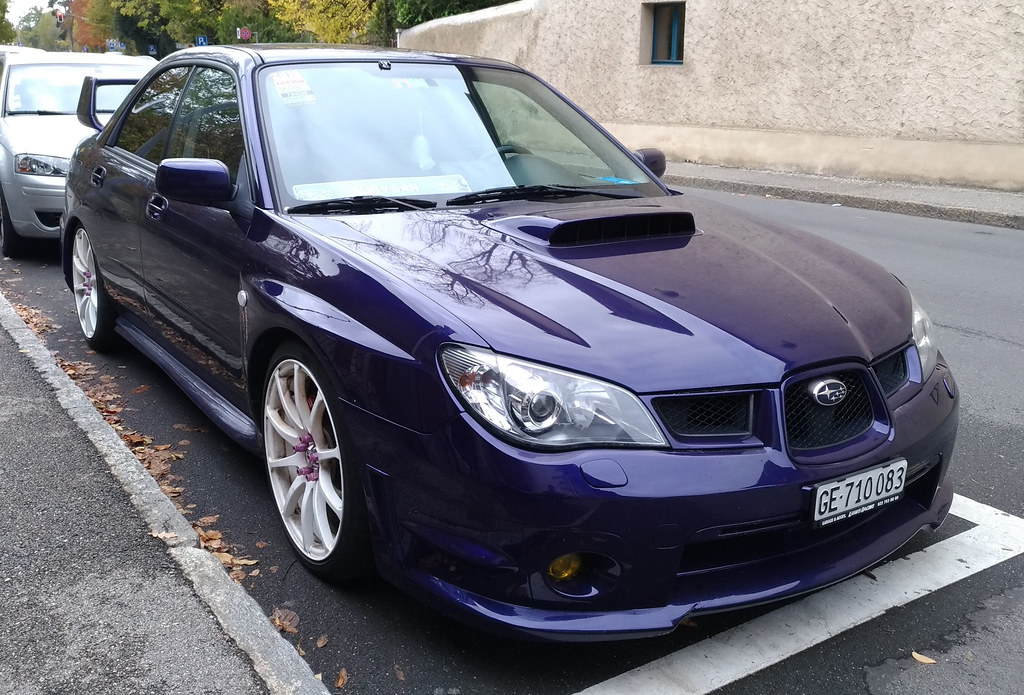
13. **Subaru WRX**:The latest iteration of the Subaru WRX, an icon of rally-bred performance and accessible all-wheel-drive thrills, still proudly comes with a manual transmission option. However, in a significant departure from its purist roots, it now shares prominent space with a continuously variable transmission (CVT) in most of its available trims. This dual-transmission strategy reflects Subaru’s broader effort to appeal to a more diverse customer base.
Subaru itself has openly acknowledged that the automatic CVT option is particularly popular with younger buyers and those who primarily drive in city environments, where the constant demands of shifting in traffic can become a tiresome chore. This pragmatic acceptance of changing driver preferences underscores a significant shift for a brand that built its formidable reputation on a direct, engaging driving experience, historically synonymous with a robust manual gearbox.
Boasting 271 horsepower and 258 lb-ft of torque from its potent 2.4-liter turbocharged flat-four engine, the WRX remains undoubtedly quick and immensely fun to drive. However, with Subaru shifting its focus toward broader market appeal and catering to convenience, the golden days of manual-only rally cars are undeniably fading fast. Even in brands meticulously built on the very foundation of driver engagement, the pressures of market expansion and user-friendliness are steadily eroding the once-unquestioned dominance of the stick shift.
Car Model Information: 2023 Subaru WRX Base
Name: Subaru WRX
Caption: 2022 Subaru WRX GT
Aka: Subaru Impreza WRX (1992–2014)
Production: 1992–2014 (Impreza-based models),2015–present (standalone models)
Assembly: Ōta, Gunma
Layout: Front-engine, four-wheel-drive layout
Manufacturer: Subaru
Related: Subaru Levorg,Subaru WRX STI
Class: Sport compact
BodyStyle: Sedan (automobile)
Categories: 2020s cars, All-wheel-drive vehicles, All Wikipedia articles written in British English, All articles with unsourced statements, Articles with short description
Summary: The Subaru WRX is an all-wheel drive sport compact car manufactured by the Japanese automaker Subaru, originally based on the Impreza created for the World Rally Championship in 1992. Subaru claimed the name WRX stands for “World Rally eXperimental”. Starting with the 2015 models, the WRX lineup has been split from the Impreza, with a different body style that is not offered as an optional hatchback/wagon, being introduced as the separate Levorg model.
Get more information about: Subaru WRX
Buying a high-performing used car >>>
Brand: Subaru Model: WRX
Price: $27,961 Mileage: 27,000 mi.
Read more about: Beyond the Chrome: Unmasking 13 Car Driver Stereotypes That Are More Than Just Roadside Chatter
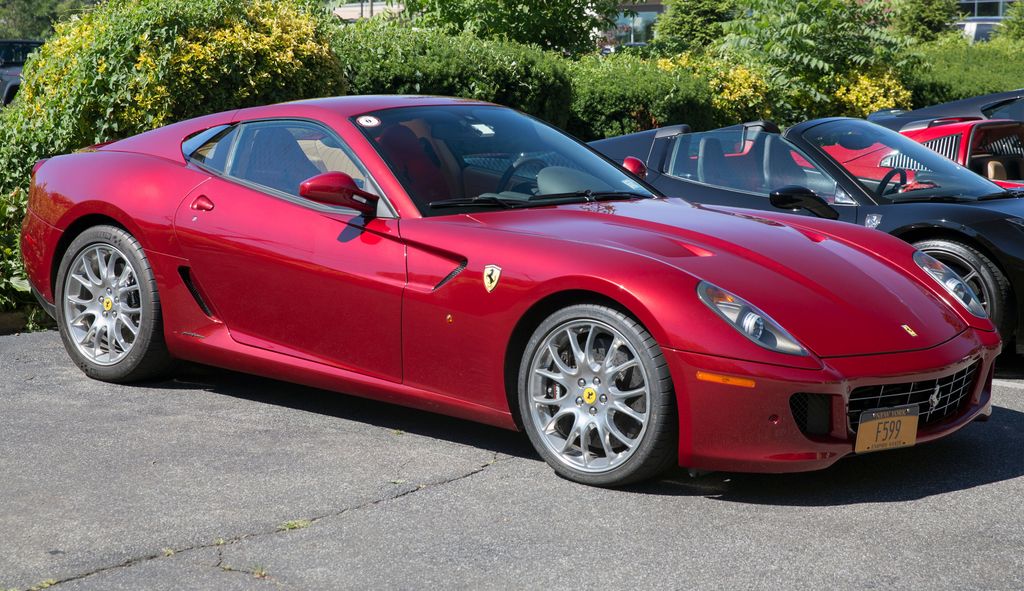
14. **Ferrari 599 GTB Fiorano**:Few brands evoke the sheer passion and engineering artistry of Ferrari. For decades, the Prancing Horse offered some of the most glorious gated-shifter manual transmissions in the world. However, Ferrari has not offered a manual gearbox in any of its new cars since the early 2010s, marking a profound and definitive end to an era. Within this period, the 599 GTB Fiorano stands out as a high-water mark for the brand’s iconic gated-shifter era, representing a pinnacle of analog driver involvement.
Only a precious handful of these majestic front-engine V12 beasts were ever built with the 6-speed manual transmission, making them true unicorns in the automotive landscape today. These incredibly rare specimens are distinct from the vast majority that came equipped with the F1-style paddle shifters, underscoring a rapid shift in consumer preference and technological advancement even within the ultra-luxury performance segment. Their rarity only accentuates their current desirability.
Powered by a formidable 6.0-liter V12 engine churning out 612 horsepower, the 599 GTB was a performance marvel. Yet, it’s the manual versions that now command astronomical prices, selling for millions at auction. This extreme rarity and stratospheric valuation powerfully highlights a broader, industry-wide phenomenon: stick shifts became so overwhelmingly unpopular in new car sales that they have now transformed into exotic, highly sought-after collectibles, cherished precisely for their bygone analog appeal. This illustrates the ultimate vanishing act—from common choice to exclusive artifact.
Car Model Information: 2023 Honda Civic EX
Name: Ferrari 599
Manufacturer: Ferrari
Aka: Ferrari 599 GTB Fiorano
Production: 2006–2012
ModelYears: 2007–2012
Assembly: Maranello
Designer: Jason Castriota
Url: https://www.ferrari.com/en-EN/auto/599-gtb-fiorano
Title: Ferrari 599 GTB Fiorano
Website: velocetoday.com
AccessDate: 14 May 2024
Class: Grand tourer
BodyStyle: berlinetta
Related: Ferrari 612 Scaglietti,Ferrari 599XX
Layout: Mid-engine design#FMR layout – Front Mid-engine / Rear-wheel drive,rear-wheel-drive
Publisher: Ferrari
Engine: 5999 cc
Abbr: on
Order: cite web
Powerout: ubl
Transmission: manual transmission
Wheelbase: 2750 mm
Length: 4665 mm
Width: 1962 mm
Height: 1336 mm
Weight: 3953 lb
Predecessor: Ferrari 575M Maranello
Successor: Ferrari F12
Categories: 2010s cars, Articles with short description, Cars introduced in 2006, Commons category link is on Wikidata, Ferrari vehicles
Summary: The Ferrari 599 GTB Fiorano (internal code F141) is a grand tourer produced by the Italian automobile manufacturer Ferrari. It served as the brand’s front-engined, two-seat model, replacing the 575M Maranello in 2006 as a 2007 model, and was later replaced for the 2013 model year by the F12berlinetta.
Styled by Pininfarina under the direction of Jason Castriota, the 599 GTB debuted at the Geneva Motor Show in February 2006. The bodywork features optimized aerodynamics with distinct sail panels flanking the rear window, directing and maximizing air flow to a linear rear nolder.
The 599 is named for its total engine displacement 5,999 cc (6.0 L), Gran Turismo Berlinetta nature, and the Fiorano Circuit test track used by Ferrari.
Get more information about: Ferrari 599
Buying a high-performing used car >>>
Brand: Ferrari Model: 599 GTB Fiorano
Price: $23,541 Mileage: 56,979 mi.
Read more about: Gearhead God: Inside Eric Clapton’s Ferrari Pantheon – A Dive into 12 Legendary Rides That Define True Automotive Taste
The stories of these fourteen iconic vehicles paint a vivid and somewhat melancholic picture of an automotive era drawing to a close. The manual transmission, once the undisputed champion of driver engagement and a symbol of mechanical purity, has undeniably ceded its ground to the relentless march of technological progress, market convenience, and evolving consumer preferences. While automatics, dual-clutch systems, and CVTs offer undeniable advantages in speed, efficiency, and ease of use, there’s a profound, almost intangible loss for those who believe true driving is an active, collaborative art form between human and machine. For the purists, the search for that perfect rev-match and the satisfying click of a gear lever now takes them down increasingly narrow and specialized paths, turning once-commonplace options into cherished, collectible rarities. The future may be faster, but it undeniably sacrifices a direct, tactile connection that defined generations of automotive passion.

